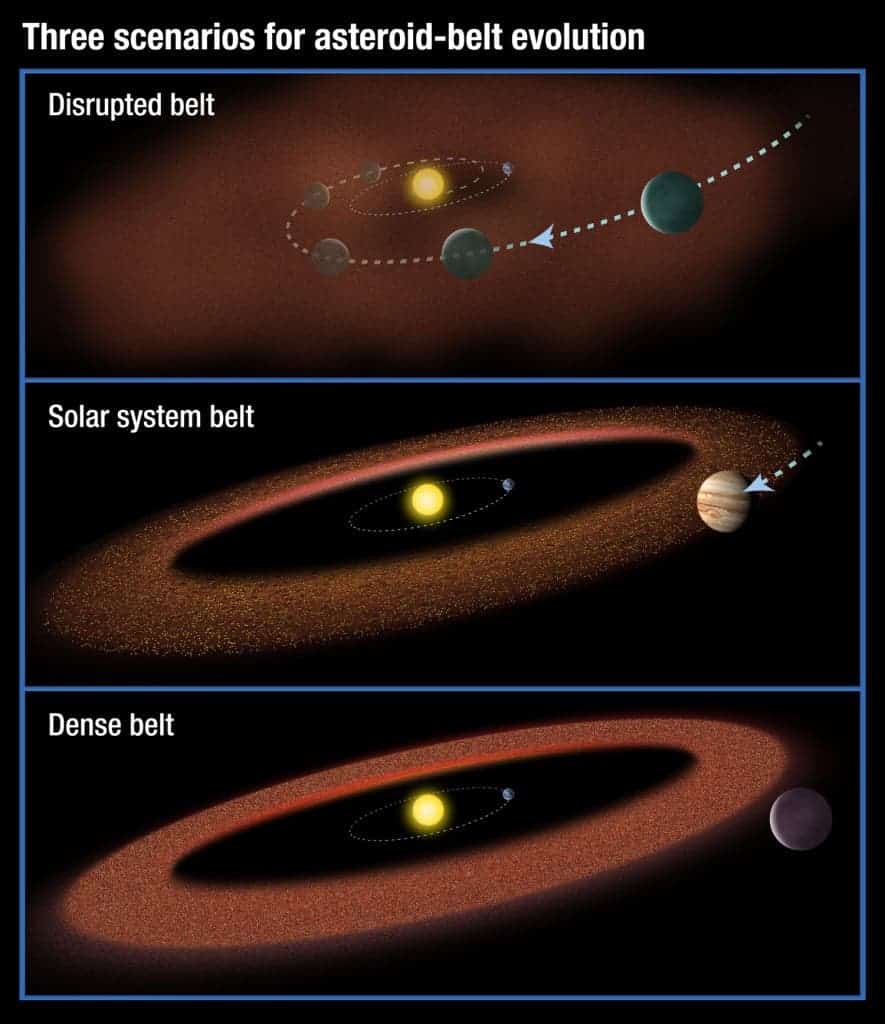When you think of asteroid impacts, the last thing that might come to mind is life. Contrary to popular belief, a team of researchers have recently presented their theory that holds intelligent life on our planet spurred with the help of asteroid impacts. As cosmic cold rock hit Earth, the impacts allowed for a shift in environment that pressured life to adapt and make rapid changes. Also, during the planet’s early days, frozen water, which came along with asteroids, might have had a crucial role in birthing life.
Asteroids aren’t enough though. For intelligent life to foster on an exoplanet, these space rocks need to be in a certain position, according the hypothesis formulated by astronomers Rebecca Martin of the University of Colorado in Boulder and Mario Livio of the Space Telescope Institute in Baltimore. Out solar system’s asteroid belt – between Jupiter and Mars – is not an accident, according to the researchers, and was indispensable for life formation.
Alien life needs just the right asteroid belt
The researchers claim that for a planet to harbor alien life, chances are that it needs an asteroid belt of its own, similar to that of our solar system, positioned in the so-called “snow line. At this certain orbit, frozen materials like water ice will remain in this state; any closer to the sun will melt them, and any farther would lead to the asteroids being gobbled by the gravitational pull of some giant planet, like Jupiter in our case.
“To have such ideal conditions you need a giant planet like Jupiter that is just outside the asteroid belt [and] that migrated a little bit, but not through the belt” Space Telescope Science Institute astronomer Mario Livio said. ”If a large planet like Jupiter migrates through the belt, it would scatter the material. If, on the other hand, a large planet did not migrate at all, that, too, is not good because the asteroid belt would be too massive. There would be so much bombardment from asteroids that life may never evolve.”

The scientists analyzed data from NASA’s Spitzer telescope, which has so far found infrared signals around 90 different stars which can indicate the presence of an asteroid belt. Of the 520 gas giants found orbiting other stars, in only 19 cases were they outside of where that star’s snow line would be expected to be. This suggests that fewer than four percent of exoplanet systems will be equipped to support the evolution of advanced, intelligent life in accordance with the punctuated equilibrium theory.
Their research isn’t a bash at alien life research, but on the contrary. It suggests hints and gives a pertinent starting point for scientists to better channel their efforts, and have a better chance at getting results.
“Our study shows that only a tiny fraction of planetary systems observed to date seem to have giant planets in the right location to produce an asteroid belt of the appropriate size, offering the potential for life on a nearby rocky planet. Our study suggests that our Solar System may be rather special,” said Martin.
Findings were presented in the Monthly Notices of the Royal Astronomical Society.






